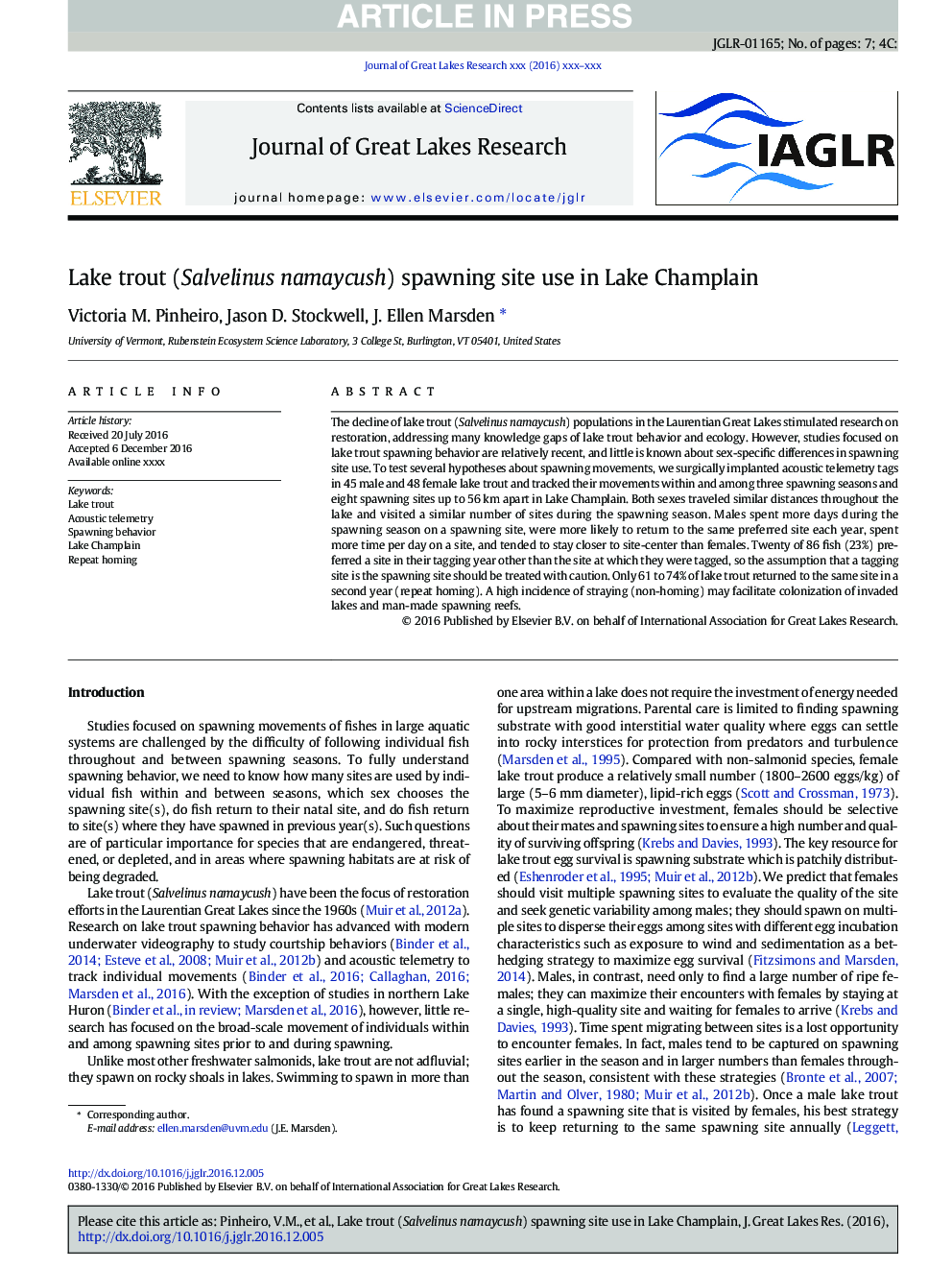| Article ID | Journal | Published Year | Pages | File Type |
|---|---|---|---|---|
| 5744731 | Journal of Great Lakes Research | 2017 | 7 Pages |
Abstract
The decline of lake trout (Salvelinus namaycush) populations in the Laurentian Great Lakes stimulated research on restoration, addressing many knowledge gaps of lake trout behavior and ecology. However, studies focused on lake trout spawning behavior are relatively recent, and little is known about sex-specific differences in spawning site use. To test several hypotheses about spawning movements, we surgically implanted acoustic telemetry tags in 45 male and 48 female lake trout and tracked their movements within and among three spawning seasons and eight spawning sites up to 56Â km apart in Lake Champlain. Both sexes traveled similar distances throughout the lake and visited a similar number of sites during the spawning season. Males spent more days during the spawning season on a spawning site, were more likely to return to the same preferred site each year, spent more time per day on a site, and tended to stay closer to site-center than females. Twenty of 86 fish (23%) preferred a site in their tagging year other than the site at which they were tagged, so the assumption that a tagging site is the spawning site should be treated with caution. Only 61 to 74% of lake trout returned to the same site in a second year (repeat homing). A high incidence of straying (non-homing) may facilitate colonization of invaded lakes and man-made spawning reefs.
Related Topics
Physical Sciences and Engineering
Earth and Planetary Sciences
Earth and Planetary Sciences (General)
Authors
Victoria M. Pinheiro, Jason D. Stockwell, J. Ellen Marsden,
